Honda, bucking an industry-favorite habit of creating entry-level bikes that appear to be perforated into mediocrity by the sharp pencil of a Merciless Accountant, surprised us all with the beautifully built and unexpectedly fun CBR250R. It’s injected new life into the quarter-liter segment—heck, it doubled the population at the sportbike end—and has been, in the words of a Honda exec, “a great success.”
High-tech features are rare at the barista end of the pay scale, but the CBR packs a few, including electronic fuel injection, comprehensive instrumentation and sleek bodywork that’s as far from roto-molded-kayak quality as you can get. Now for another surprise: ABS as a reasonably low-cost option.
Plop a mere $4599 ($500 over a non-ABS model) on the fine Formica table at your Honda dealer and come away with the peace of mind only ABS can confer. For the CBR250R, Honda's Combined ABS is simplified compared to the firm's other applications. Up front, a three-piston caliper bites a 296mm disc (the non-ABS bike has a two-pot clamp). Two of the three pistons move in concert with the front brake lever, while the other receives its orders from the foot pedal through a mechanical delay valve. In this way, the brakes are linked rear-to-front only, which is similar to the VFR1200F setup. A lightweight ABS modulator (with integrated electronic control module) intercepts brake-line pressure to keep both wheels rolling. Honda says the weight gain is a mere 9 pounds, raising the ready-to-ride heft to 368 lb.
There’s no way to disable the ABS unless, probably, you yank a fuse. Could be your daily commute requires a six-pack of stoppies or a series of hacked-out arrivals to your reserved parking space—if it doesn’t, you won’t care that the ABS is always on. It’s true that the CBR’s front binder is a bit wooden at the lever, and it’s also true that you can feel the slight lag as brake application at the pedal first goes to the back disc and thence to the front. If this were a short-wheelbase, torque-belching monster needing expert guidance and lock-tumbler precision, these complaints might be valid. But the CBR is so cheerful, so forgiving of rider ineptitude or indolence that they just don’t matter. ABS onset is smooth, cutting in promptly when needed but also giving the brakes back to your control quickly.
Adding ABS to the CBR has done nothing to diminish its charm. It remains amazingly comfortable, with a compact but unstressed riding position, effectively soft suspension (made possible by the bike’s lack of heft) and willing single-cylinder engine that’s both commendably smooth and eager to give its whole 24-horsepower self to the cause. Around town, the CBR is plenty quick. There almost isn’t a road too twisty for this little demon, which happily schools you on the benefits of maintaining momentum. And in case you’ve learned that lesson too well—found yourself charging in way too hot—it’s nice to know the C-ABS has you covered.
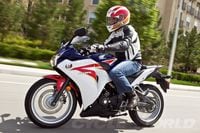
/cloudfront-us-east-1.images.arcpublishing.com/octane/OIKJC4JA3ZH7BMKUGWYKBIY5FA.jpg)
/cloudfront-us-east-1.images.arcpublishing.com/octane/MT2SAEWY6FDXFBYSLDE3AEFDTM.jpg)
/cloudfront-us-east-1.images.arcpublishing.com/octane/66UPKPYVURBPRCP5HXSN56MEMM.jpg)
/cloudfront-us-east-1.images.arcpublishing.com/octane/EOREGDSRKFDCRJC6K3EDVHBGCE.jpg)
/cloudfront-us-east-1.images.arcpublishing.com/octane/42RF63Q3LVCMBP3DGTWXFYSMOA.jpg)
/cloudfront-us-east-1.images.arcpublishing.com/octane/XNVY3EVWZFCEVPUGJGAN633LXE.jpg)
/cloudfront-us-east-1.images.arcpublishing.com/octane/2PLTVHXY7FDSPFHKU5CFOC43ZY.jpg)
/cloudfront-us-east-1.images.arcpublishing.com/octane/B6M3WTRLFZGNXBEATNXPVGBBD4.jpg)
/cloudfront-us-east-1.images.arcpublishing.com/octane/4CMH3FI73BEM5D6MFYX42FLDSQ.jpg)
/cloudfront-us-east-1.images.arcpublishing.com/octane/RIHAPYNWU5H3XAOXNOPRWCBTQA.jpg)
/cloudfront-us-east-1.images.arcpublishing.com/octane/HU4NUBCL3VAFZA75VYRCMAUHVM.jpg)
/cloudfront-us-east-1.images.arcpublishing.com/octane/OB43AZK7TRA6XLZL5WRDVW2TDA.jpg)
/cloudfront-us-east-1.images.arcpublishing.com/octane/5G44Y3FXWNFSTEQKCA355PXOPU.jpg)

/cloudfront-us-east-1.images.arcpublishing.com/octane/XRI4GTLCVBA5NESASCBIR5LYQI.jpg)
/cloudfront-us-east-1.images.arcpublishing.com/octane/EF7566PXARGMBAOMLWTECYL3LE.jpg)
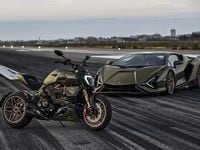
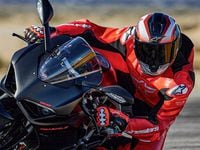
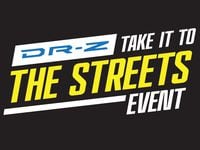
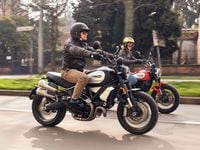

/cloudfront-us-east-1.images.arcpublishing.com/octane/3LASNXSWUZFFPISURDJF3OCWBU.jpg)
/cloudfront-us-east-1.images.arcpublishing.com/octane/2BHJKWUTBNBTLMQCKDNVEG6DKQ.jpg)
/cloudfront-us-east-1.images.arcpublishing.com/octane/MPHXIIV54NAU5L6E4SYZHCXVRM.jpg)